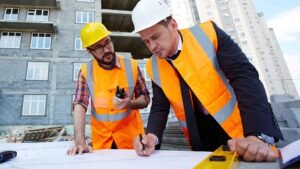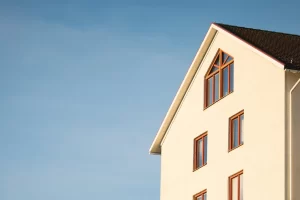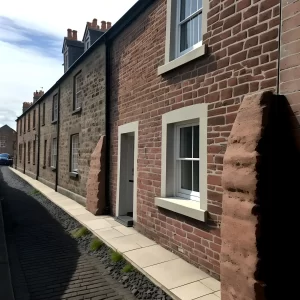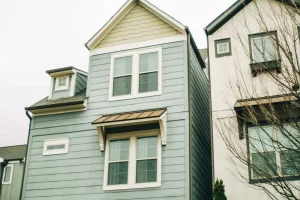A home inspection checklist is a series of guidelines used to evaluate a property’s condition. It is normally a precondition to getting a mortgage. The moment you’ve found a property and are seriously considering making an offer on it, be certain that hidden defects or problems won’t crop up after you’ve made a formal offer.
Can you rely on the Estate Agent’s property description?
Regrettably, you can’t always depend on the real estate agent or seller to be truthful regarding the condition of the property. If you dutifully go over the entire home inspection checklist while using an experienced Building Surveyor, you can save time, effort and money. Suppose that you find a house and later discover that the walls are cracking and that they require extensive renovating – then you will experience significant added personal expenditure.
What do Surveyors check with a House Survey Checklist?
Included in the survey checklist are the following:
-
careful examination of all significant areas of the house, both inside and out
-
details about the property and where it is located
-
inspection of the insulation, drains, and the property damp-proofing, including damp tests on the walls
-
inspecting the wooden beams visually
-
heating, electricity and gas / oil supply function test
-
identifying problems in general that could affect the value of the property
The HomeBuyer Survey is done by a RICS Chartered Surveyor and though not as extensive as a traditional Building Survey, it’s better suited to conventional or newer builds that have fewer defects. When a surveyor comes to your property, they’ll visually examine the property looking at everything from walls, ceilings, and floors to the loft, roof and guttering as well as any permanent outdoor buildings.
What are the Condition Ratings in a House Survey?
Using a standard house survey checklist, the surveyor will mark down the condition of various areas of the property. These will be graded or labelled in the following manner:
NI: if there are any parts of the property that the surveyor has not inspected, they will let you know. This is a mostly visual inspection and the HomeBuyer Survey does not involve taking up carpets or removing the secure coverings from electrical panels etc to find out what’s behind. If there has been a loft extension in the property, the chartered surveyor can’t look at the inside of the roof to see if it has been done correctly.
Rating 1: no repair is required on the element. Everything is basically in good working order.
Rating 2: there is a flaw, but that fault is not terribly dangerous and in need of urgent fixing. For a home inspection, this might be a minor crack in a wall that does not impact the home’s structure.
Rating 3: there is either a serious problem that needs to be addressed, such as needing replacement of a major element like a wall bulging or a chimney leaning, and requires immediate repair or further investigation. This category would also be used if there is, say, a head height problem regarding stairs where someone has the potential of bumping their head, etc.
Why do I need a Building Survey?
A Building Survey is a report on the condition of a property. It provides expert advice on property issues and can help a solicitor inform you on whether you should proceed with buying a property.
There are three types of survey and the one for you will depend on the age and condition of the property you are considering buying: the RICS Condition Report, the RICS Homebuyer Report and the RICS Building Survey.
Condition Report: this only describes the condition in brief and does not ordinarily advise on remedial action.
HomeBuyer Report: this gives advice on defects, repairs and maintenance options and includes a rough valuation.
Full Building Survey: this is the most wide-ranging and provides a comprehensive breakdown of the repairs and maintenance options as well as advice on defects but does not typically include a valuation.
What items are checked in a Building Survey?
The surveyors will also inspect doors and windows and sometimes built-in items like cupboards to be sure they have been fitted properly. A description of what type of property it is, how many and what type of rooms it has, its energy rating and its environmental impact may also be included in the House Survey checklist.
What do I do with a Building Survey?
If any issues are identified, which could be discussed in high detail. For an instance if there are high damp meter readings whilst on property, they will suggest a further inspection from a specialist to quote for the work which needs carrying out. If not spotted and rectified in time, this could not only cost you more money, but it will also affect your final mortgage valuation.
The survey will also take into account local factors. If the property is close to a railway line or main road, for example, the survey might mention that there may be intermittent or continuous noise disturbance that might affect your enjoyment of the property.
What is not Covered in a HomeBuyer Report?
The HomeBuyer Report is appropriate for new homes, but it’s limited in its scope and there are some things that it won’t cover. The survey is visual, so the surveyor won’t be able to inspect areas that are covered up, such as under floorboards or carpet.
The surveyor will take photos and include them in the report. Or, they might offer some technical repair advice, such as if there is a problem like dodgy electrical sockets. But it’s up to the buyer to investigate further and get a quote for the additional cost of these repairs.
In some cases, there could be certain parts of the property that the chartered surveyor is unable to reach. This could be if, for example, they haven’t been given the keys to open the window and check the seals or if there isn’t sufficient or safe access to the loft so they can’t view it properly.
HomeBuyer v Building Survey
For many properties, particularly period and new builds, a HomeBuyer Survey addresses everything necessary for both the buyer and the lender.
The Building Survey is a much more detailed examination of the building and is typically appropriate when the building is older or is not conventionally designed. It can also provide peace of mind on a traditional house when the buyer is going to commission an expensive scheme (e.g. extension) once they have moved in.
Finally, a Building Survey Report includes everything you’d see in the HomeBuyer Survey, but the examination and report is more detailed and comprehensive. It will take into account the materials from which the building is constructed, and predict how these are likely to perform in the future. It will identify repairs and the likely consequences if not carried out and can include costs for remedial options.
Which House Survey Should I choose for a property I am buying?
If it’s a pretty standard, fairly new-build then the HomeBuyer Survey should be fine and will pick up any major problems you need to be aware of.
If it’s an older property, particularly high-value, with any kind of complex elements to it, or if you’re thinking of major renovations, or if you simply want a more detailed report, then a full Building Survey is going to be what you’re after.
You may therefore wish to play it safe by opting for the higher level report, even if it costs a bit more, given that a property purchase is a serious investment.












